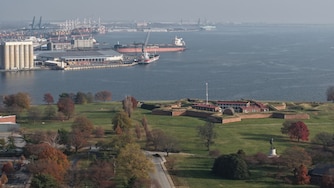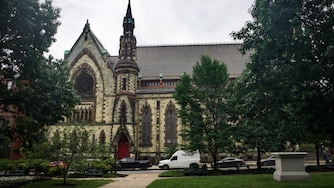So you survived the Columbia quake of 2025? Heck, maybe you even missed it.
The magnitude 2.5 earthquake that jostled Howard County and surrounding areas Monday evening around 5:17 p.m. was relatively gentle as far as seismic activity goes. Although some residents said the quake drew them out of their homes, no one was hurt and no damage was reported.
Perhaps its biggest impact was reminding Marylanders that earthquakes, though infrequent, are still a possibility.
“People for a very brief moment become aware of the Earth’s crust beneath them,” said Rebecca Kavage Adams, a geologist with the Maryland Geological Survey.
Here’s what you need to know about earthquakes in the region:
Earthquakes originating in Maryland tend to be small
Unlike places like the West Coast or Japan, Maryland isn’t located near a present-day tectonic plate boundary, Kavage Adams said.
The state is situated closer to the middle of the North American tectonic plate, which stretches from the center of the Atlantic Ocean to California. That plate is moving away from the one beneath Europe, which puts some pressure on the smaller faults and geologic material beneath Maryland, Kavage Adams said.
“Over time, the rocks under us do accumulate stress,” she said. “When they relieve stress, there are small earthquakes.”
The state’s strongest confirmed tremor was a magnitude 3.1 event near Hancock, Washington County, in 1978. More recently, a magnitude 2.3 earthquake registered in Montgomery County in January 2024. A few months later, a “micro” earthquake was confirmed near Spencerville.
Multiple quakes have originated near Columbia
The epicenter of Monday’s quake was about 2.5 miles east of the Riverside community, which is south of Columbia near the intersection of state Routes 29 and 32.
That intersection was the site of other seismic activities in 2001 and 2002. Both of those earthquakes were smaller than the one that occurred Monday.
According to the Maryland Geological Survey, earthquakes have originated over the years near Columbia’s Allview Estates as well as in Ellicott City, Fulton and Glenelg.
The distribution of earthquakes is not random, said Benjamin Fernando, a seismologist at the Johns Hopkins University.
About 400 million years ago, Baltimore sat on a tectonic plate boundary. Remnant faults remain from that era and new faults developed later, but the area is considered fairly stable, Fernando said.
“Not a lot has happened geologically in a long time,” he said.
Out-of-state earthquakes are felt in Maryland, too
Seismologists can’t predict when the next earthquake in Maryland will occur. However, research suggests residents are more likely to feel out-of-state earthquakes than a tremor originating here.
Areas in Virginia and north of Wilmington, Delaware, have historically experienced more seismic activity than Maryland, according to the Maryland Geological Survey.
For example, the most widely felt earthquake in U.S. history took place in 2011, when a magnitude 5.8 earthquake was detected near Mineral, Virginia, and caused an estimated $200 million to $300 million in overall property damage.
Marylanders also reported feeling a magnitude 4.8 earthquake detected in New Jersey in 2024.
Earthquakes on the East Coast tend to be felt more widely than those on the West Coast, though scientists are still figuring out why that is, Fernando said.
The 2011 Virginia quake was felt from Florida to Maine and even as far west as Colorado, Texas and Utah.
Maryland monitors seismic activity at two locations, Soldiers Delight in Baltimore County and Garrett College in Western Maryland.
Following Monday’s earthquake, Kavage Adams rushed home to check the seismometer she keeps in her basement.
Although she didn’t feel the tremors herself, the seismologist was excited that for a moment people got to experience an earthquake without any harm.
“We can sell our state that way,” Kavage Adams joked. “Maryland, a safe place to experience an earthquake.”





Comments
Welcome to The Banner's subscriber-only commenting community. Please review our community guidelines.